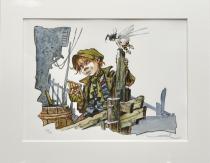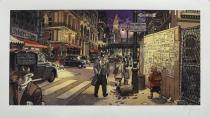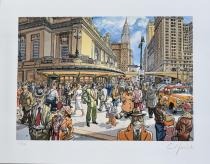Numerical Prints
The term "digital print" appeared in the late 1980s to describe all the events produced by a printer.
The digital print has its roots in the history of print: "Since its inception, the print is bound up with technological advances. She took off with the invention of paper and contributes to the development of scientific knowledge of its location almost exclusive use of the image. '
Printing and reproduction mechanized subsequently transformed the artistic processes such as printmaking. Dissemination of lithography, screen printing and digital printing now shows continuity in the evolution of the print. The development of digital print is done in parallel with that of digital art and with the popularization of digital photography. The interest in digital photography has increased the demand for paper and archival inks, which results in a better preservation of digital proofing.
According to Franck Bordas ... "Even if hybridizations are more frequent and often more difficult to distinguish the concepts of print reproduction and original prints are based on the same distinctions: print from an original existing or creation of a specific author." To answer this question, some artists create their work on a single file they call "original", others produce limited edition (and numbered), and still others offer "open editions" (unlimited prints) . The value of the work is determined by the existence or not of multiple in number.
10 OEUVRE(S)













